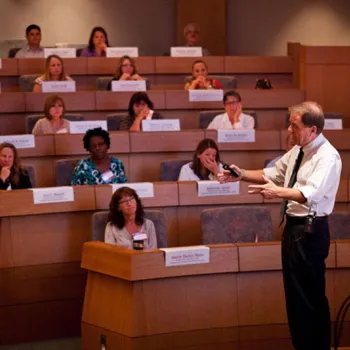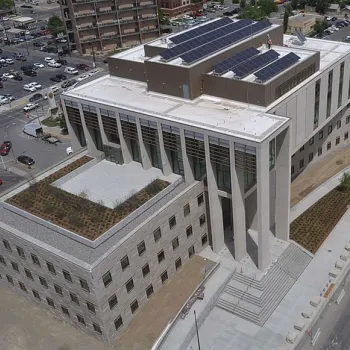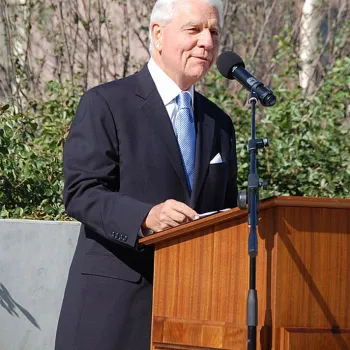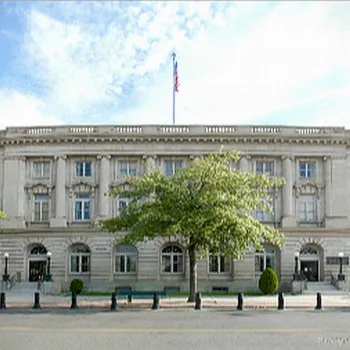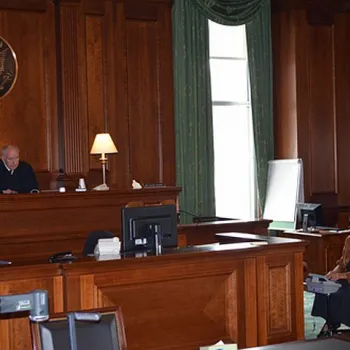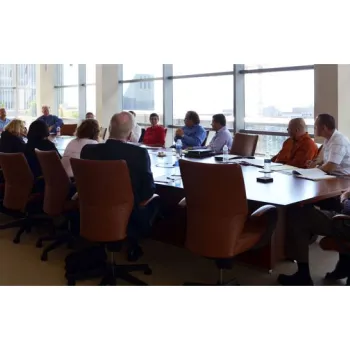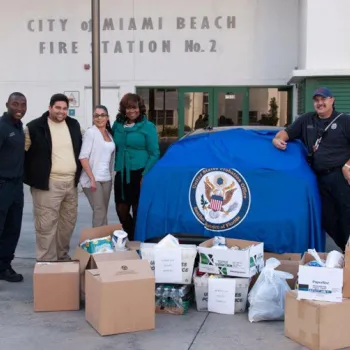The public’s access to and safety in federal courthouses nationwide is a paramount concern.
Nationwide, the Judiciary provides public access to justice, whether in its federal courthouses or in facilities housed in multi-tenant federal buildings. Access to justice goes hand-in-hand with the protection of judges, court staff, and the public in these court facilities. In the event of a natural or man-made disaster the Judiciary anticipates the continuation of court operations, through training at circuit-wide workshops and regular tests of its own business continuity and emergency preparedness plans.
Facilities, Security, and Emergency Preparedness
-
Tenant Alterations Pilot Program Expanded: In June 2012, the Space and Facilities Committee endorsed allowing court unit executives, on a limited, case-by-case bases, to enter directly into real property alteration contracts with private-sector companies for projects up to $100,000 in value. This delegation lets courts that have the necessary in-house expertise in construction, project management and contracting manage and complete projects more efficiently, so that GSA can focus on the larger, more complex Judiciary space projects. This also should result in lower costs, shorter time frames, and higher quality products.
In a pilot program in Des Moines, Iowa, and Washington, DC, the courts successfully procured general contractors and completed construction in Fall 2011 and Spring 2012, respectively. -
Capital Security Improvement Funded: The FY 2012 appropriations bill included $20 million in funding to the General Services Administration (GSA) for a new Judiciary Capital Security Program (CSP), which will help the Judiciary and GSA improve security conditions of existing federal court facilities in locations that are unlikely to be considered for new courthouse construction in the near future. Four CSP projects were endorsed for FY 2012 and are underway: Brunswick, Georgia; Benton, Illinois; Lexington, Kentucky; and San Juan, Puerto Rico.
Also, in consultation with the Judicial Conference Committee on Judicial Security, the Committee on Space and Facilities endorsed the project plan to identify courthouse projects that qualify for the CSP for FY 2013 and beyond. The review and implementation process includes stakeholders from the courts, GSA, the U.S. Marshals Service (USMS), and the Judicial Conference Space and Facilities Committee in consultation with the Judicial Security Committee and the AO.
CSP studies are underway in Raleigh, North Carolina; Columbus, Georgia; Monroe, Louisiana; St. Thomas, U.S. Virgin Islands; and Texarkana, Arkansas/Texas. Each study will identify, and estimate the cost of, three different design options addressing security concerns. The projects will then be ready for implementation should funding be included in the enacted FY 2013 appropriations bill. -
Membership for Court Security Committees (CSC) Expanded: At its March 2012 session, the Judicial Conference approved several changes to the CSCs by updating and expanding their membership, allowing the chair to adjust membership as needed, and adding representatives from the bankruptcy court, among other changes.
The establishment of a CSC in each district was a cornerstone recommendation of the 1982 Report of the Attorney General’s Task Force on Court Security that was endorsed by the Judicial Conference. Since then the Conference has periodically revisited the CSCs to help ensure that their membership is representative of all the court units within a district and that their mission is current. - Judiciary Facilities Access Card Program Developed: In 2012, development of the Facility Access Card (FAC) Project continued. The project, which is mandatory for all courts, will provide every Judiciary employee with a secure, verifiable ID card. A longer-term goal is to use the FAC to log onto computer systems and applications. The FAC will enhance security within the Judiciary by ensuring that the person carrying and using a FAC is the correct person authorized for access to external and internal spaces and eventually eliminate the need for individuals to carry multiple cards and remember multiple PINs. A FAC pilot program is scheduled to rollout in fiscal year 2013 in the District of Delaware.
-
Emergency Preparation and Continuity of Operations Plans Tested by Hurricane Sandy: Hurricane Sandy tested the emergency preparedness of the federal courts in its path. In anticipation of the storm, seven courts successfully failed-over their Case Management/Electronic Case Files systems to remote facilities without a hitch.
In the storm’s aftermath, U.S. courthouses in New Jersey, the Court of International Trade in New York City, and the Manhattan locations of the Southern District of New York and the Bankruptcy Court for the Southern District closed for a period of time. Lack of power and transportation to court facilities hampered recovery, along with physical damage to some facilities. As the Southern District of New York activated its COOP, some staff worked from the district’s White Plains facility. Those who could, teleworked. Courthouses with power offered temporary workspace for displaced court employees and other federal agencies. Courts, such as the Court of International Trade, continued to receive electronic case filings and to handle all emergency matters.
Broadband and hot spot devices were shipped to courts in the Second Circuit that allowed court staff to access systems and function remotely in support of their courts. Thanks to the Pretrial Services Automated Cases Tracking System (PACTS) mapping feature, probation and pretrial services officers in the affected districts continued to track cases and access client information. Although several of the east coast providers of telephone interpreter services were closed, court staff was able to organize and redistribute the work so there were no service interruptions during the storm. Despite the post-storm blackout, the Southern District of New York pressed on in a few emergency cases, with a hearing in one case conducted by cell phone.
Within days of the hurricane, the restoration of many court facilities was completed or projected within the shortterm. - National Level Exercise 2012 Tests Cyber Protections: In May 2012, a one-day, pre-event cyber-awareness conference, held at the Thurgood Marshall Federal Judiciary Building in Washington, DC, brought together court emergency preparedness coordinators, exercise planners, cyber-experts, and FEMA and DOJ representatives. Court emergency preparedness teams and volunteer facilitators from the courts collaborated on improvements to occupant emergency plans (OEP) and continuity of operations plans (COOP) , and prepared for a June exercise that involved mock cascading cyber-related disruptions to key infrastructure and resources. The U.S. Court of Appeals for the Second Circuit; U.S. District Court for the Southern District of New York; U.S. Bankruptcy Court for the Southern District of New York; U.S. Court of International Trade; U.S. Court of Federal Claims; and the AO participated in the exercise.
- 2012 National Emergency Preparedness Workshop Held in Seattle, Washington: In a pilot workshop held in July 2012, court emergency preparedness teams from several district courts heard from judges and executives who had experienced emergencies involving armed shooters, fires, bombings, terrorist attacks, hurricanes, floods, and tornados. Participants from the Southern District of Iowa, Middle District of Louisiana, Eastern District of Michigan, and Western District of Washington attended sessions on training and testing methods, emergency communications, and telework, all designed to help them improve their occupant emergency plans and continuity of operations plans. The workshop was developed by a team of court employees working with the AO, Federal Judicial Center, U.S. Marshals Service, and the Executive Office for U.S. Attorneys as a training model for coordinated emergency preparedness planning among federal courts and complementary agencies.
- 2012 Emergency Preparedness Conference Held By Seventh Circuit: In September 2012, the Seventh Circuit Court of Appeals, in consultation with the AO and the Federal Judicial Center, conducted a two-day emergency preparedness conference for its courts and court units. Chief judges, court unit executives, and judicial employees met with federal and state emergency managers to consider cross-sector emergency preparedness planning. They heard from panels on event prevention and mitigation; preparedness, response, and recovery; situations involving an armed shooter; and communications in support of court emergency preparedness planning. The conference also covered lessons learned from recent incidents, and the roles and responsibilities of the U.S. Marshals Service and FEMA.
Annual Report 2012
- Annual Report 2012
- Fiscal Year Funding and Cost Containment Initiatives
- The Courts and Congress
- Accountability
- Support for Judges and Court Staff
- Overseeing Facilities, Safeguarding the Courts, and Preparing for Emergencies
- Assistance to Courts and Their Programs
- Improving Service to the Public
- Ongoing Pilots and Projects
- Improving Court Case Management, Financial Systems, and Statistical Reporting
- Using Information Technology to Reduce Costs, Increase Efficiencies
- Supporting Defender Services
- Expanding Supervision Capabilities in Probation and Pretrial Services
- Federal Rules of Practice and Procedure
- In Profile: The Administrative Office of the U.S. Courts

